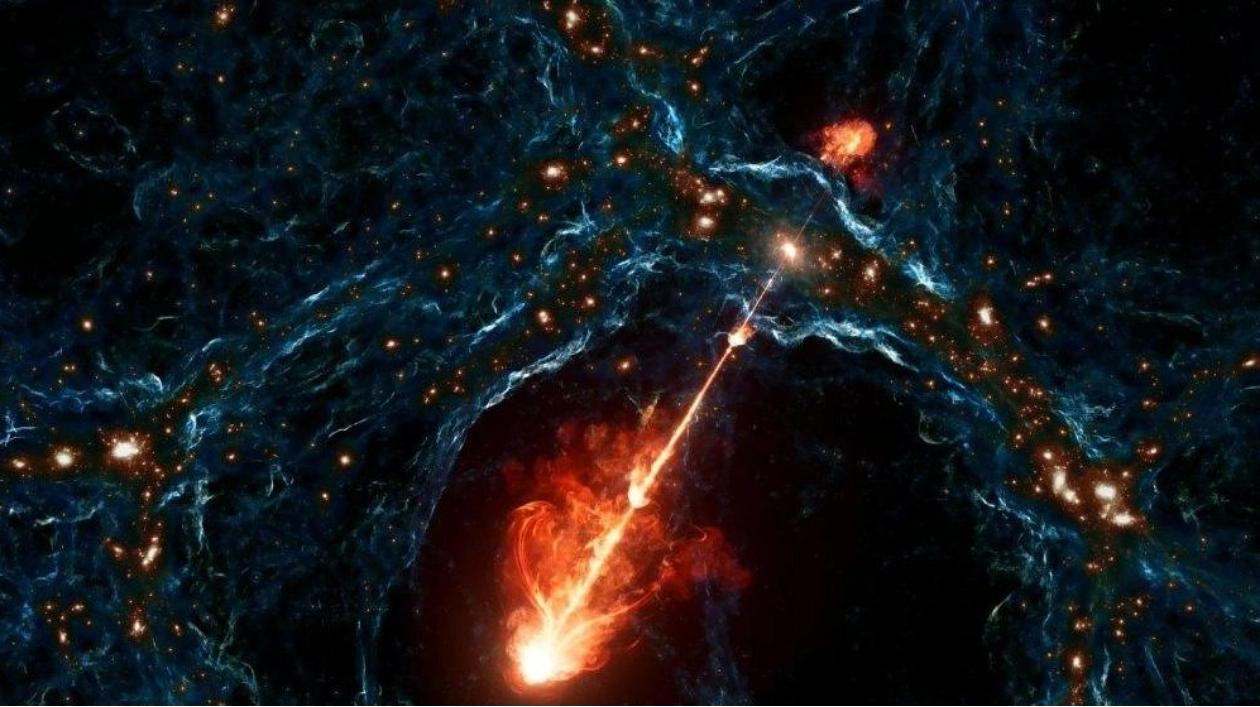Two opposing fountains of plasma and particles stretching across 23 million light-years constitute the longest pair of black hole jets ever observed. This distance is substantial enough to potentially influence the universe's evolution on cosmic scales, according to astronomers who reported their findings on September 18 in Nature.
“Traditionally, astronomers assumed that all jets stay within, or at least very near, their host galaxy,” stated astrophysicist Martijn Oei of Caltech during a September 16 news conference. “Our findings suggest that supermassive black holes not only dominate their host galaxy but also the cosmic web surrounding them.”
Astronomers hypothesize that all massive galaxies harbor a colossal black hole at their core, and some of these galaxies emit high-energy jets of charged plasma into space. These jets impact the structure and evolution of the galaxy they inhabit, potentially slowing or halting star formation (SN: 10/13/23).
The newly discovered pair, dubbed Porphyrion after a rebellious giant in Greek mythology, was identified through observations from LOFAR, a network of radio wave detectors in the Netherlands. Porphyrion's immense size—exceeding the previous record holder by approximately 7 million light-years—suggests its influence may extend beyond individual galaxies.
Follow-up observations indicate that Porphyrion's host galaxy is situated within a filament of the cosmic web, the complex network of gas and galaxies where most of the universe's ordinary matter is found (SN: 3/6/23). The jets also existed during an early epoch of the universe's history, roughly half its current age, when cosmic web filaments were closer together than they are today. Oei and colleagues estimate that the jets could span two-thirds of the distance across the voids between cosmic filaments.
Porphyrion is not an isolated case. A citizen science initiative to identify other large black hole jets has uncovered over 10,000 that span approximately 3 million light-years or more, though none match Porphyrion's size. “These large black hole jet systems might be less uncommon than previously thought,” Oei noted. “Thus, they could exert a greater influence than we anticipated.”
Questions or comments on this article? E-mail us at feedback@sciencenews.org | Reprints FAQ
M.S.S.L. Oei et al. Black hole jets on the scale of the cosmic web. Nature. Published September 18, 2024. doi: 10.1038/s41586-024-07879-y.
Lisa Grossman is the astronomy writer. She holds a degree in astronomy from Cornell University and a graduate certificate in science writing from the University of California, Santa Cruz. She resides near Boston.
We are at a critical juncture, and supporting climate journalism has never been more crucial. Science News and our parent organization, the Society for Science, need your assistance to enhance environmental literacy and ensure our response to climate change is grounded in scientific understanding.
Please subscribe to Science News and consider adding $16 to expand science literacy and comprehension.






